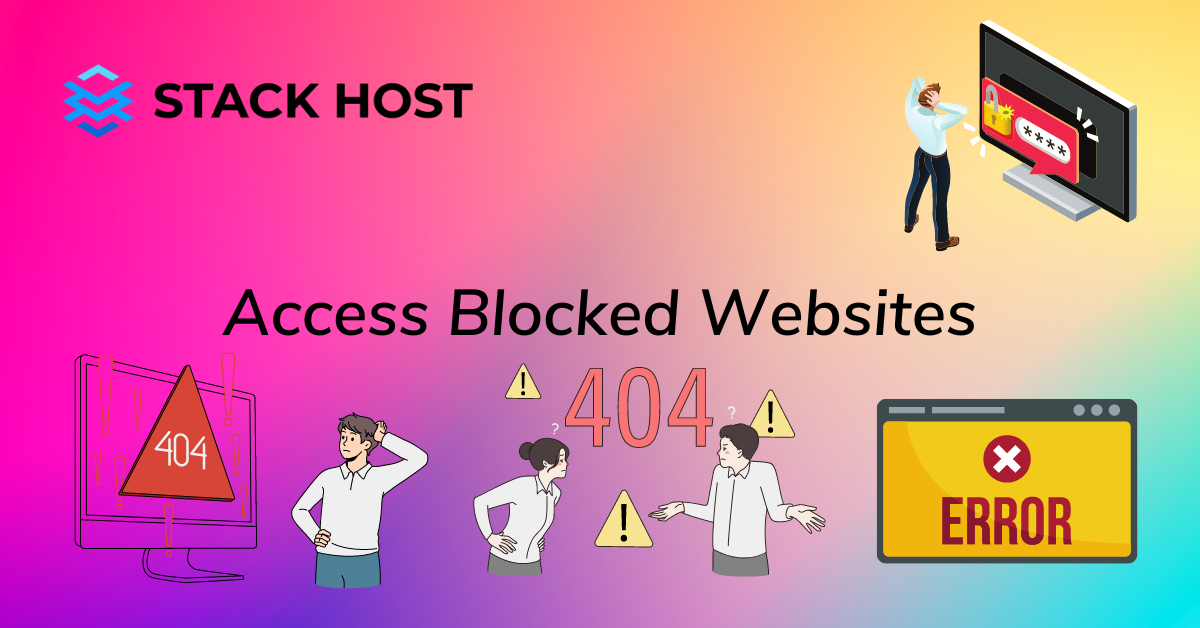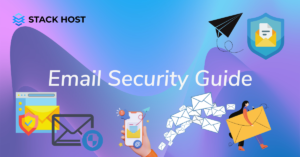Google Chrome is one of the most popular browsers. It has some nifty features, fast speed, and built-in anti-malware software that protects your computer against websites that could risk your security or privacy.
But sometimes, the limitations of Chrome can be annoying. A browser is almost always limited to seeing what sites are available online and which sites you have already visited.
If you’re reading this, it means you’re searching for ways to access blocked websites on Chrome. At some point in your life, you might come across a website that is blocked by the network administrator or filter. Maybe it is because of copyright infringement, age-restricted content such as alcohol and tobacco advertisements, or immoral sites with adult content.
It could be for several reasons; however, if there’s a website that you need to access right now but can’t do so because of the restrictions imposed by your school, workplace, or WiFi provider. If that sounds like something that has happened to you recently, then read on and learn these seven proven ways to access blocked websites on Chrome.
💻 Using Incognito mode to access blocked websites

When it comes to different ways to access blocked websites on Chrome, using Incognito mode is one of the simplest but most effective ways to do so.
So, what is Incognito mode, and what does it do?
Well, Incognito mode is a feature that allows you to visit websites without leaving any traces of those pages on your computer. This means that any pages you visit while in Incognito mode will not appear in your browsing history, search history, or in any way be associated with your Google account. All traces will be removed from your computer as soon as you close the Incognito tab.
When you’re in Incognito mode, the blocked website will not know who you are or whether you have visited the site. They will never find out that you are a student at the university or whether you are a staff member at the workplace. You will be completely anonymous. They will have no idea who you are at all.
This will give you full access to the website without any restrictions whatsoever. You can access another blocked website if you open a new Incognito tab while in the normal browsing tab. This means that you can simultaneously have access to both websites without any risk to your security or privacy.
💻Change Network Proxy Settings
The other way to access a blocked website on Chrome is to change your network proxy settings. This can be done using an Ethernet cable or an internet connection through WiFi. All you need to do is go to the Chrome browser settings by clicking on the three-dot menu in the upper-right corner and selecting Settings from the drop-down menu.
When the Settings page opens, click on the Network tab under the “Network” section. You will see two sections: “Private” and “Public.” The private network is what you use when you’re connected to your network or a trusted network. The public network is what you use when you’re connected to public WiFi or at a coffee shop.
If you want to change your network proxy settings, click on the “Change proxy settings” link in the “Network” section. This will take you to the Internet Properties page, where you have to click on the “Connections” tab.
Select “LAN connection” from the drop-down menu. Go to the “Proxy server” section and select “Use proxy server for your LAN” or “Use proxy server for your network.”
After making the appropriate selection, click “OK” to save the change. This will instantly change your network proxy settings and allow you to access any website that might be blocked on your network.
💻Use VPN to Access Blocked Websites on Chrome

Using a VPN is an effective way to access blocked websites on Chrome. A VPN, or Virtual Private Network, is an online service that allows you to connect to a server in a different location and make it appear as if you are physically present in that location. There are many VPN services available online.
You can subscribe to any VPN service and download the app to your computer. Once the VPN app is installed, you must sign in using your credentials and select the location to which you want to connect.
You can select any location from the list of servers available in the server list. Once you have selected the server, the VPN will automatically connect to that location and appear as if you are physically present.
This is important because the website that you are trying to access might be blocked in your physical location but not in the location of the server to which the VPN connects. This is the reason why VPNs are so popular. They allow users to access the internet from different places and bypass internet restrictions.
There is a wide range of VPN services available, and you can choose one that fits your budget and offers the best features for your device.
💻 Install a Chrome Extension to Access Blocked Websites
Another way to access blocked websites on Chrome is to install a Chrome extension that unblocks websites. Many Chrome extensions are available online, and a few are free to use. You can install any of the following Chrome extensions to unblock websites and access blocked websites on Chrome:
Hola Unblocker
This extension is free on the Chrome web store and allows users to access blocked websites. Hola Unblocker is a helpful tool that you can use to unblock websites that are otherwise blocked in your location.
Collusion
Collusion is a free Chrome extension that allows you to access blocked websites on Chrome. This extension is also helpful in unblocking sites, downloading files, and torrenting anonymously.
Proxy Switcher
Proxy Switcher is a free Chrome extension that unblocks websites and allows you to change your IP address. With this extension, you can easily change your location and access geographically restricted content from anywhere in the world.
💻 Whitelist Websites On Chrome Using Hosts File
Another way to access blocked websites on Chrome is to whitelist websites using the hosts file. The hosts file will allow you to access websites that are otherwise blocked on your computer. This file will redirect any website you add to it to your computer’s IP address.
It is important to mention that this method only applies to Windows computers. Next, we will show you how to whitelist websites using the hosts file on Chrome. First, you have to open the Command Prompt on your computer by pressing “Windows + R” and then typing “cmd.” A new window will open where you have to type “cd” and then drag and drop the hosts file to it.
After this, you have to write “notepad hosts” and press “Enter.” Once you have opened the hosts file, you have to add the IP address of the blocked website. The IP address is normally under “IPv4” on the “Edit” tab. After adding the IP address, you have to save the file, and the blocked website will be accessible from your computer.
💻 Use TOR to Access Blocked Websites
TOR is an acronym for The Onion Router. This browser can be used to access blocked websites on Chrome and any other device you might be using. You can download this app on your computer and any other device you want to use it on.
After you have downloaded and installed the app, you must open the browser and start browsing. TOR routes your connection through several different computers worldwide, and it will look as if you are browsing from a different location. This means that the blocked website will have no way of knowing where you are located and will let you browse the site without any restrictions whatsoever.
How does the TOR Browser work?
Well, when you open the TOR Browser, it will use the TOR server network to redirect your connection and access blocked websites. It will also change your IP address to make it look like you are browsing from a different location altogether. This is an effective way to bypass any restrictions and access blocked websites.
💻Google’s DNS Service

This is another exciting way to get around blocked websites. Most of the time, people are unaware that whenever they visit a website, they type the domain name in the address bar. This domain name is then translated and communicated to the website’s server.
The DNS server is where the domain name is translated into an IP address. DNS is a service that translates domain names into IP addresses. You can change the DNS server on your computer to Google’s DNS IP address.
Google provides public DNS services to all users at a low cost. If you use Google’s DNS service to access blocked websites, you will have to configure your computer to use Google’s DNS server address.
Conclusion
We hope that you’ve found this article useful and that you will be able to access those sites that are blocked. However, you should remember that it is most likely not legal to do so and that you could be putting your computer at risk.
We also hope that this article has made you more aware of the risks of using an open-source browser and the dangers of relying on a third-party service for online security. The best way to stay safe while online is to update your computer’s software regularly and always use a VPN when accessing the internet on public WiFi.





